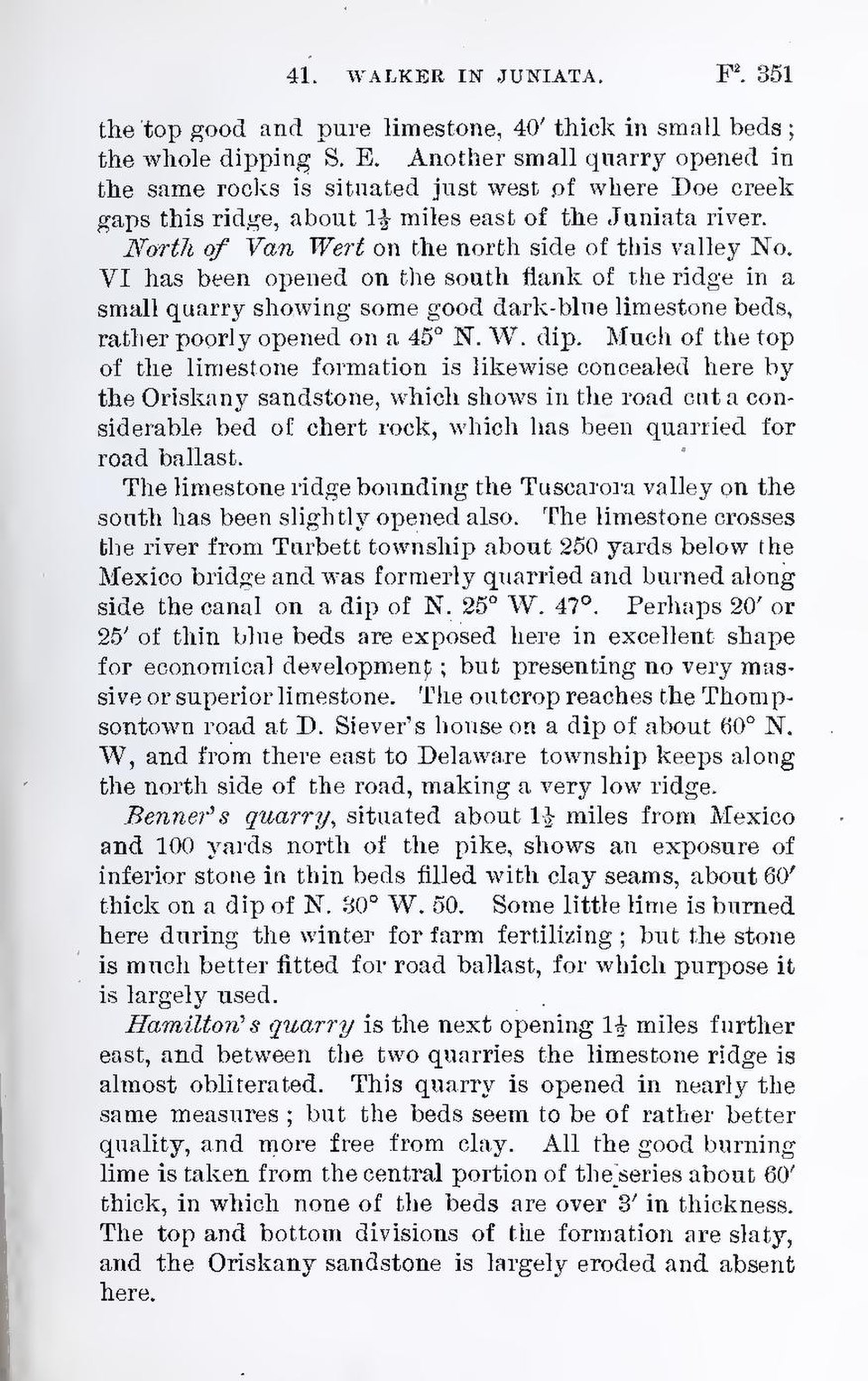the top good and pure limestone, 40′ thick in small beds; the whole dipping s. E. Another small quarry opened in the same rocks is situated just west of where Doe creek gaps this ridge, about 1½ miles east of the Juniata river.
North of Van Wert on the north side of this valley No. VI has been opened on the south flank of the ridge in a small quarry showing some good dark-blue limestone beds, rather poorly opened on a 45° N. W. dip. Much of the top of the limestone formation is likewise concealed here by the Oriskany sandstone, which shows in the road cut a considerable bed of chert rock, which has been quarried for road ballast.
The limestone ridge bounding the Tuscarora valley on the south has been slightly opened also, The limestone crosses the river from Turbett township about 250 yards below the Mexico bridge and was formerly quarried and burned along side the canal on a dip of N. 25° W. 47°. Perhaps 20′ or 25′ of thin blue beds are exposed here in excellent shape for economical development; but presenting no very massive or superior limestone. The outcrop reaches the Thompsontown road at D. Siever’s house on a dip of about 60° N. W., and from there east to Delaware township keeps along the north side of the road, making a very low ridge.
Benner’s quarry, situated about 1½ miles from Mexico and 100 yards north of the pike, shows an exposure of inferior stone in thin beds filled with clay seams, about 60′ thick on a dip of N. 80° W. 50. Some little lime is burned here during the winter for farm fertilizing; but the stone is much better fitted for road ballast, for which purpose it is largely used.
Hamilton’s quarry is the next opening 1½ miles further east, and between the two quarries the limestone ridge is almost obliterated. This quarry is opened in nearly the same measures; but the beds seem to be of rather better quality, and more free from clay. All the good burning lime is taken from the central portion of the series about 60′ thick, in which none of the beds are over 3′ in thickness. The top and bottom divisions of tie formation are slaty, and the Oriskany sandstone is largely eroded and absent here.
